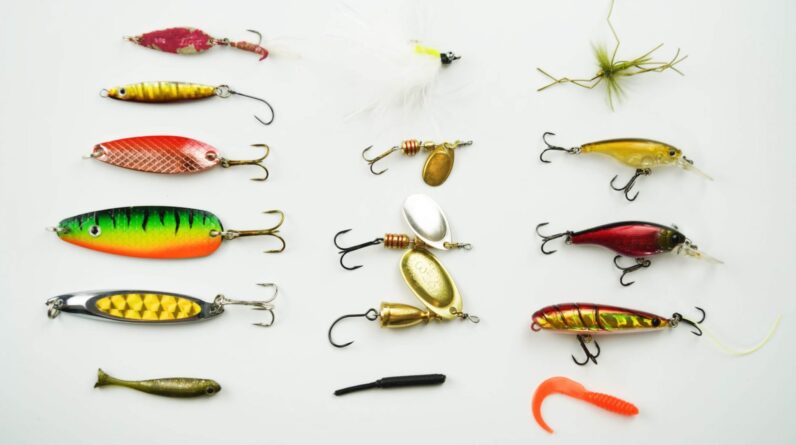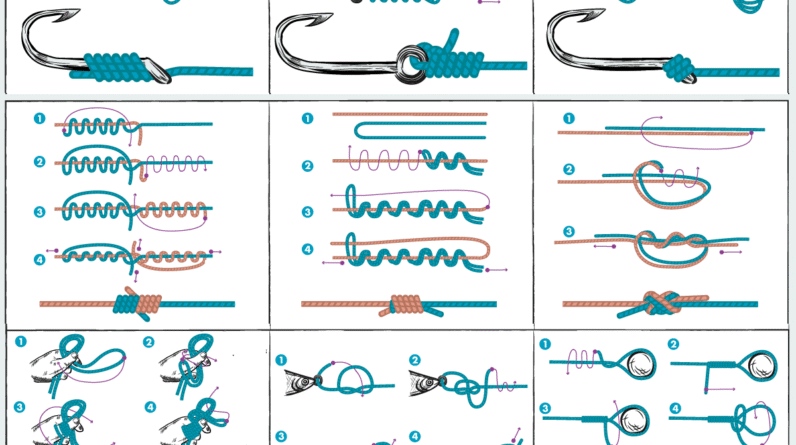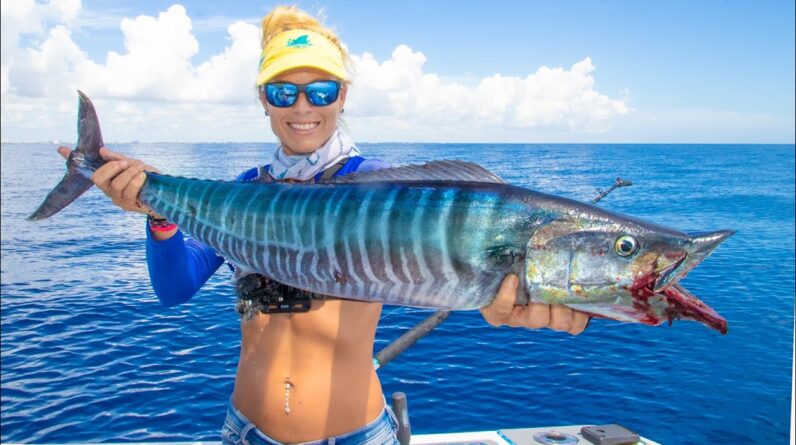Introduction
Ultimate Guide to Surf Fishing: There’s something magical about standing on the shoreline, feeling the cool spray of saltwater against your face, and casting your line into the surf. Surf fishing combines the thrill of ocean fishing with the tranquility of the beach, making it one of the most rewarding and accessible ways to enjoy saltwater angling in the USA.
Whether you’re chasing stripers off the East Coast, redfish in the Gulf, or surfperch along the Pacific, surf fishing offers excitement, challenge, and variety. But success in the surf depends on more than luck — it’s about having the right gear, mastering techniques, and knowing where to fish.
In this ultimate guide proudly presented by Cheerfulfisherman.com, we’ll dive deep into everything you need to know about surf fishing — from the essential gear every angler should own and the best baits for different species, to expert techniques that boost your catch rate. Plus, we’ll reveal the top 10 surf fishing locations in the USA, tips for reading tides, safety advice, and strategies to make every cast count.
1. What Is Surf Fishing?
Surf fishing is the practice of catching fish from the shoreline, wading into the surf, or casting directly from the beach into the ocean. Unlike boat fishing, you don’t need expensive vessels or deep-sea gear — just the right setup, timing, and strategy.
You can catch a wide variety of species, depending on location and season — including striped bass, red drum, flounder, pompano, bluefish, snook, surfperch, and even small sharks.
Why it’s popular:
- Easy access — no boat needed
- Great for beginners and families
- Year-round fishing in most U.S. coastal states
- Combines relaxation and skill
- Inexpensive compared to offshore fishing
2. Essential Surf Fishing Gear
Choosing the right surf fishing gear is the foundation of success. The waves, currents, and powerful fish you’ll face demand durable, specialized equipment.
2.1 Surf Rods
A surf rod needs to provide long casting distance and control over big fish in heavy surf.
Recommended specs:
- Length: 9–12 feet (longer rods for longer casts)
- Power: Medium-heavy to heavy
- Action: Moderate to fast (for better hooksets)
- Material: Graphite or composite for strength and sensitivity
Top models:
- Penn Battalion II Surf Rod (10 ft) – Great balance between power and casting distance.
- St. Croix Triumph Surf Spinning Rod (10’6”) – Premium sensitivity and performance.
- Ugly Stik Bigwater Surf Rod (11 ft) – Durable and affordable choice for beginners.

2.2 Surf Reels
Surf fishing reels must handle saltwater corrosion, long casting, and strong runs.
Recommended specs:
- Size: 5000–8000 for spinning reels
- Gear ratio: 4.7:1 to 5.6:1 (for torque and speed balance)
- Drag: At least 20–25 lbs
- Line capacity: 250+ yards of 20–30 lb braid
Top picks:
- Shimano Ultegra XTD 14000 – Designed for long-distance casting and durability.
- Penn Spinfisher VI 6500 – Fully sealed body, great for saltwater conditions.
- Daiwa BG MQ 6000 – Smooth drag system and excellent corrosion resistance.
2.3 Fishing Line
Your line must withstand surf abrasion, salt, and strong runs.
Best options:
- Braided line: 20–40 lb test for long casting and sensitivity.
- Monofilament: 15–25 lb for shock absorption in rough surf.
- Fluorocarbon leader: 20–40 lb for stealth and abrasion resistance.
Pro tip: Use a shock leader — a 10–15 ft heavier mono section (about 50–60 lb test) to handle the force of casting and strong waves.
2.4 Terminal Tackle
Your rig setup determines how effectively you present your bait.
Common surf rigs:
- Fish Finder Rig: Perfect for large predatory fish like red drum or striped bass.
- Pompano Rig (Double-Drop Rig): Ideal for smaller fish like whiting, pompano, and surfperch.
- Carolina Rig: Great all-around choice for calm surf and multiple species.
Essentials:
- Pyramid sinkers (2–6 oz depending on surf)
- Barrel swivels
- Circle hooks (#2 to 5/0)
- Snap swivels for quick rig changes

2.5 Baits and Lures
Both live bait and artificial lures can be highly effective, depending on target species.
Best natural baits:
- Shrimp – Great all-round bait for Gulf and East Coast surf.
- Sand fleas (mole crabs) – Top choice for pompano and whiting.
- Cut bait (mullet, bunker, squid) – Ideal for red drum and striped bass.
- Clams and mussels – Effective for surfperch and croaker.
Top lures:
- Spoons (e.g., Kastmaster or Hopkins) – For bluefish and mackerel.
- Soft plastic swimbaits (3–5″) – For flounder and striped bass.
- Topwater plugs – Great for predatory fish during early morning and dusk.
- Metal jigs – Perfect for casting long distances and targeting feeding schools.
2.6 Waders and Accessories
You’ll often be standing in cold, moving water, so comfort and safety matter.
Recommended gear:
- Neoprene or breathable waders with boots.
- A sand spike rod holder for hands-free fishing.
- Tackle bag with waterproof compartments.
- Polarized sunglasses for spotting fish and reading waves.
- Headlamp for night fishing.
3. Surf Fishing Techniques
Knowing how to fish the surf effectively is just as important as having the right gear. Here are the techniques that separate casual anglers from consistent surf fishing pros.
3.1 Reading the Surf
Understanding how to “read” the water is key to locating fish.
Look for:
- Troughs: Depressions near shore where fish cruise.
- Sandbars: Fish often feed along their edges.
- Rip currents: Indicate deeper water and food movement.
- Foam lines: Where baitfish gather and predators follow.
Learning to recognize these subtle differences helps you cast where fish are actually feeding — not just where the waves look calm.
3.2 Casting Techniques
For surf fishing, distance and accuracy matter.
Tips for longer casts:
- Use a long rod (10–12 ft) and streamlined sinkers.
- Perform an overhead power cast for maximum range.
- Release line just before the rod tip points skyward.
- Practice smooth acceleration rather than brute force.
Pro tip: The best anglers focus on timing and technique — not raw power.

3.3 Setting the Hook
Most surf fish strike hard, but not always. Circle hooks make setting easier.
- When you feel a bite, reel steadily rather than jerking the rod.
- Let the fish turn before applying pressure.
- Keep the line tight but avoid dragging the bait out of the strike zone.
3.4 Fighting and Landing Fish
Fighting fish in surf requires patience and control.
- Use the wave motion to your advantage. Reel as waves recede.
- Walk backward slightly when landing large fish.
- Always keep the fish’s head facing shore.
- Use a landing net or leader grip for safety.
Avoid lifting large fish by the line — it can snap easily.
3.5 Night Surf Fishing
Some of the biggest catches happen after dark. Fish like striped bass, snook, and shark often feed more actively at night.
Night fishing tips:
- Use glow-in-the-dark rigs or lighted bobbers.
- Bring a bright headlamp and reflective gear.
- Keep noise and light minimal to avoid spooking fish.
- Check local regulations on nighttime beach access.
4. Top 10 Surf Fishing Locations in the USA
From the rocky coasts of Maine to the sunny shores of California, the U.S. offers countless surf fishing opportunities. Here are the top 10 must-fish locations for every surf angler.
4.1 Cape Hatteras, North Carolina
Target species: Red drum, bluefish, flounder, striped bass
Best season: Spring and fall
Why it’s great: Known as the “Surf Fishing Capital of the World,” Cape Hatteras offers miles of pristine beach and legendary red drum runs.
Tip: Use cut mullet or bunker on a fish finder rig during a rising tide.
4.2 Outer Banks, North Carolina
Target species: Speckled trout, puppy drum, sea mullet
Best season: Year-round, with peaks in spring and fall
Why it’s great: The OBX provides endless beach access, surf tournaments, and diverse fish populations.
Tip: Try Hatteras Island for the best surf conditions.
4.3 Montauk Point, New York
Target species: Striped bass, bluefish, false albacore
Best season: September–November
Why it’s great: Famous for its striper blitzes and rugged beauty, Montauk is a dream spot for serious surf casters.
Tip: Fish the nighttime tide changes with topwater plugs.
4.4 Cocoa Beach, Florida
Target species: Pompano, whiting, snook, Spanish mackerel
Best season: Winter through early spring
Why it’s great: Family-friendly beaches, easy access, and productive surf fishing close to Orlando.
Tip: Sand fleas and shrimp work best for pompano here.
4.5 Assateague Island, Maryland/Virginia
Target species: Striped bass, red drum, kingfish
Best season: Spring and fall
Why it’s great: This barrier island combines scenic beaches with great fishing and wild ponies.
Tip: Use a double-drop rig with clam strips during incoming tide.
4.6 Long Beach Island, New Jersey
Target species: Striped bass, bluefish, fluke
Best season: May–November
Why it’s great: Home of the annual LBI Surf Fishing Classic and productive fall runs.
Tip: Try fishing at sunrise near the inlets for trophy stripers.
4.7 Cape Cod, Massachusetts
Target species: Striped bass, bluefish, black sea bass
Best season: Late spring through early fall
Why it’s great: Classic New England surf fishing with beautiful beaches and plenty of access.
Tip: Eel lures and swimbaits produce big bass here.
4.8 Padre Island National Seashore, Texas
Target species: Redfish, speckled trout, pompano, shark
Best season: Fall and spring
Why it’s great: Over 60 miles of undeveloped shoreline — ideal for off-road surf adventures.
Tip: Bring a 4×4 vehicle and fish near deeper guts after storms.
4.9 Huntington Beach, California
Target species: Surfperch, halibut, corbina
Best season: Year-round
Why it’s great: Easy access, mild weather, and consistent perch action make it a top West Coast spot.
Tip: Use Gulp! Sandworms on a Carolina rig.
4.10 Oregon Coast, Oregon
Target species: Surfperch, rockfish, lingcod
Best season: March–October
Why it’s great: Wild, rugged beaches with less crowding and excellent perch fishing.
Tip: Wading anglers should target low tide troughs near rocky outcrops.
5. Best Times and Tides for Surf Fishing
Timing can make or break a surf fishing trip.
Best times:
- Early morning and late evening: When baitfish are most active.
- Incoming tide: Fish move closer to shore to feed.
- New and full moon: Stronger tides and better fish movement.
Check tide charts before each trip and note local feeding patterns — fish often bite just as the tide begins to move.

6. Surf Fishing Safety Tips
- Always check local surf and weather conditions.
- Avoid wading too deep in rough surf.
- Wear a wading belt to prevent water entry.
- Keep a first-aid kit and freshwater rinse for cuts.
- Be mindful of rip currents — safety first, always.
7. Conservation and Ethical Fishing
Respecting the environment ensures surf fishing remains sustainable.
- Follow catch and release for non-target species.
- Dispose of fishing line properly.
- Obey bag and size limits.
- Support local conservation programs.
- Leave beaches cleaner than you found them.
8. FAQs: Surf Fishing Essentials
Q: What’s the best time of day for surf fishing?
A: Early morning and late evening during changing tides offer the best bite windows.
Q: Can I surf fish without a license?
A: Most states require a saltwater fishing license, even from shore. Always check local regulations.
Q: What size hooks should I use?
A: For small species like pompano, use #2–#1; for larger game like red drum, use 3/0–5/0.
Q: How do I find fish on a new beach?
A: Look for rip currents, sandbars, and bird activity — these usually mark feeding zones.
Q: Is surf fishing good in winter?
A: Yes! Species like striped bass, whiting, and pompano are active during colder months.
9. Conclusion: Catch the Surf Fishing Adventure
Surf fishing isn’t just about catching fish — it’s about connecting with nature, embracing the challenge, and enjoying the ocean in its purest form. Whether you’re standing on the sandy shores of North Carolina or the rocky coast of Oregon, the experience is unforgettable.
With the right gear, proper techniques, and a good understanding of tides and locations, anyone can enjoy surf fishing — from solo anglers to families spending a weekend by the sea.
So grab your rod, check the tide chart, and hit the beach — your next great fishing story is waiting in the surf.











